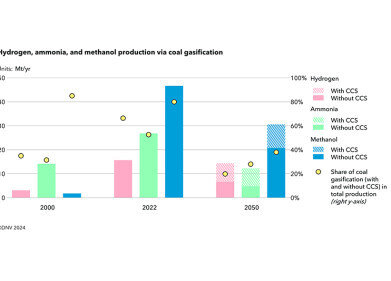Green Energy
Octopus Bacteria Offers Unusual Light Source
Jan 26 2015
Do you hate changing light bulbs? Going through the rigmarole of remembering which wattage to buy, choosing bayonet or screw-in, tottering precariously atop a step-ladder and then half-electrocuting yourself by forgetting to switch off at the power source? Well, in the future, such worries may be nothing more than a nostalgic memory. Why? Because of glowing bacteria extracted from octopi, that’s why.
Confused? Well, a Dutch designer named Teresa van Dongen has turned to the depths of the ocean to create a new potential light source with her innovative desktop lamp. Working in tandem with students at TU Delft, the largest and oldest technical university in the Netherlands, van Dongen has produced a lamp which is capable of emitting a soft blue glow.
However, before the unusual lighting fixture hits the consumer shelves, there are still a couple of major flies in the inkwell.
Hammering Out the Kinks
The first major stumbling block to van Dongen’s design is that the bacteria, which were provided by the students and are known as photobacterium, are wont to die several days after their extraction from the octopus.
The student team are conducting ongoing research into prolonging their lives, but as yet the faux seawater mixture that they have concocted seems unable to sustain them for more than a few days.
The second issue which faces the Ambio lamp (as it has been dubbed by its creator) is that it requires constant movement in order to function. Van Dongen has temporarily circumvented that problem by installing a pendulum-like feature on the lamp, which will glow for several minutes after being rocked by hand. Of course, the impracticality of this is obvious, but not insurmountable; and perhaps the lamp could function in an atmosphere prone to constant motion, such as the hull of a ship, for example.
Clearly, there is some way to go before the Ambio lamp reaches a stage where it can alleviate our daily agonies in light-bulb-changing. However, the willingness to use bacteria (traditionally thought of as harmful and undesirable) to produce energy should be applauded… though it’s far from the first time science has sought to harness its power for good.
Bacteria to the Rescue
In recent years, scientists have pursued a number of avenues in the attempt to utilise the potential energy stored in bacteria. One such project involves trying to neutralise radioactive waste or contaminated areas – such as those surrounding the nuclear plants in Chernobyl and Fukushima – with the aid of bacterial strains. For more information on the topic, see this article: Can Bioremediation Clean Up Nuclear Waste?
Meanwhile, the story from June of last year Innovative Algae-Based Technology for Wastewater Purification discusses how one water treatment facility is looking to capitalise upon the natural relationship between bacteria and algae to not only purify their water, but also generate energy in the process.
Bacteria’s not all bad, after all!
Photography is by Hans Boddeke.
Events
May 05 2024 Seville, Spain
May 13 2024 Munich, Germany
May 23 2024 Beijing, China
May 23 2024 Beijing, China
Jun 10 2024 Algiers, Algeria














